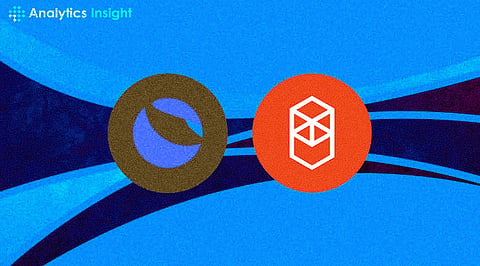

In the context of blockchain technology, dApp platforms like Terra and Fantom are making it plain to which participants are allowed to join and use dApps and solve innovative issues in blockchain. This article investigates the contrasts between Terra and Fantom and discovers the underlying technology and core competency of each. Terra, famous for its stability-focused approach to stablecoins pegged to fiat, is different from Fantom which uses the Directed Acyclic Graph (DAG) architecture, optimized for high throughput and low latency. Through studying their features and mechanisms of reaching consensus and several use cases including DeFi and enterprise use, we research the unique pros and cons of these two platforms in the developing environment formed by smart contract systems.
A project of Terra aims to build a scalable and stable blockchain for the decentralized finance and payments application. It is a dual-token system in which LUNA, a native token of Terra, is employed for collateralizing stablecoins which are pegged to different fiat currencies. This stablecoin approach achieves the same results as if the transactions happened locally also giving confidence while using cryptocurrencies in such dynamic market conditions.
In contrast, Fantom is known for its high efficiency, scalability, and secured smart contract platforms. Through a Directed Acyclic Graph (DAG) consensus mechanism called Lachesis, it achieves high throughput and low transaction fees. The architecture structure of Fantom facilitates transaction recognition in seconds thus improving its DeFi project compatibility and enhancing the dApps performance.
The app is the heart of the decentralized by implementing programmable and self-executing contracts. Terra and Fantom both support smart contracts but they are different in the technologies they are based on and the capabilities they have.
Terra lies on the Cosmos SDK, the suite for building symmetric applications. CosmWasm is the secure and reliable executing engine of smart contracts found on Terra that can be preferred because it is compatible with the Cosmos ecosystem. CosmWasm allows the implementation of sophisticated financial applications, such as decentralized exchanges (DEXs), lending protocols, and stablecoin management.
The regulation of Terra's smart contracts on the stability and interoperability between them and other Cosmos blockchains that form a larger network of related blockchains leads to ease of navigating these systems and accomplishing tasks intended in blockchain rafters.
Opera is the consensus protocol underlying Fantom's smart contracts which are the extension of its Ledger Technology called Lachesis DAG. Opera with Fantom has a high scalability, the transaction speed can reach up to 300,000 transactions per second. Fantom’s EVM-compatible smart contract platform lets developers, who are familiar with Solidity, the language they use to build Ethereum apps, build their apps on the Fantom network.
Fantom's focus on scalability and ability to interact effectively with the Ethereum ecosystem is one of the reasons behind its appeal to developers who are used to working with already existing techniques and tools.
Fantom is made up of a high transaction volume it can handle that can easily exceed the one that Terra can do, making it suitable for high-demand applications that are speedy and low cost such as NFTs.
The available Fantom equivalent of EVM makes it effortless to switch Ethereum-powered apps to the Fantom ecosystem. This interoperability makes developers more willing to use Fantom and thus it creates a spiral that leads to a faster growth of the decentralized ecosystem.
'Terra' decided to concentrate on stability (mostly with its stablecoin), keeping it in mind and developing its smart contract architecture in this regard. Security and reliability are pinned down in the first place in every design - it's crucial for finance apps where trust and stability are very important.
Fantom's non-centralized consensus mechanism leads to lower transaction fees than those of many other blockchain platforms, including Terra. Factors such as low transaction costs make Fantom attractive for micro transactions, and applications that involve a lot of on-chain interactions.
